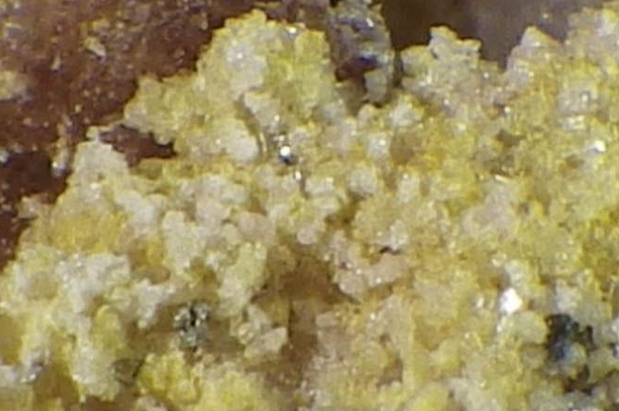X-ray
diffraction reveals two structural transitions in szomolnokite
Olivia
S. Pardo1, Vasilije V. Dobrosavljevic1,
Tyler Perez1,2, Wolfgang Sturhahn1,
Zhenxian Liu3, George R. Rossman1,
and Jennifer M. Jackson1
1Division
of Geological and Planetary
Sciences, California Institute of Technology, Pasadena, California
91125-2500, U.S.A.
2Now
at Johns Hopkins University, 3400 N. Charles Street, Baltimore,
Maryland 21218, U.S.A.
3Department
of Physics, University of Illinois at Chicago, Chicago, Illinois 60607,
U.S.A.
ABSTRACT
Hydrated sulfates have been identified and studied in a wide variety of
environments on Earth, Mars, and the icy satellites of the solar
system. The subsurface presence of hydrous sulfur-bearing phases to any
extent necessitates a better understanding of their thermodynamic and
elastic properties at pressure. End-member experimental and
computational data are lacking and are needed to accurately model
hydrous, sulfur-bearing planetary interiors. In this work,
high-pressure X-ray diffraction (XRD) and synchrotron Fourier-transform
infrared (FTIR) measurements were conducted on szomolnokite (FeSO4ˇH2O)
up to ~83 and 24 GPa, respectively. This study finds a
monoclinic-triclinic (C2/c to P1) structural phase transition occurring
in szomolnokite between 5.0(1) and 6.6(1) GPa and a previously unknown
triclinic-monoclinic (P1 to P21) structural transition occurring
between 12.7(3) and 16.8(3) GPa. The high-pressure transition was
identified by the appearance of distinct reflections in the XRD
patterns that cannot be attributed to a second phase related to the
dissociation of the P1 phase, and it is further characterized by
increased H2O bonding within the structure. We
fit third-order Birch-Murnaghan equations of state for each of the
three phases identified in our data and refit published data to compare
the elastic parameters of szomolnokite, kieserite (MgSO4ˇH2O),
and blödite (Na2Mg(SO4)2ˇ4H2O).
At ambient pressure, szomolnokite is less compressible than blödite and
more than kieserite, but by 7 GPa both szomolnokite and kieserite have
approximately the same bulk modulus, while blödite’s remains lower than
both phases up to 20 GPa. These results indicate the stability of
szomolnokite’s high-pressure monoclinic phase and the retention of
water within the structure up to pressures found in planetary deep
interiors.
Szomolnokite from the
Lavender Pit, Bisbee, Cochise County, Arizona

